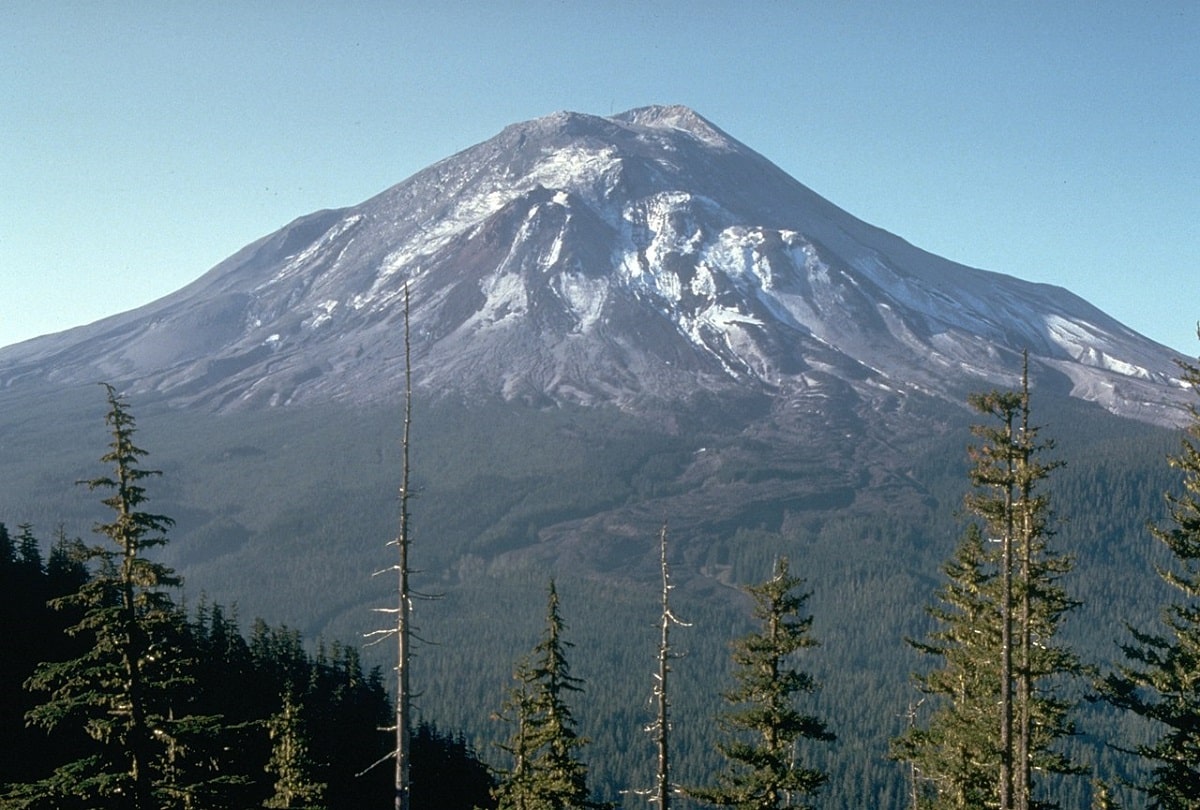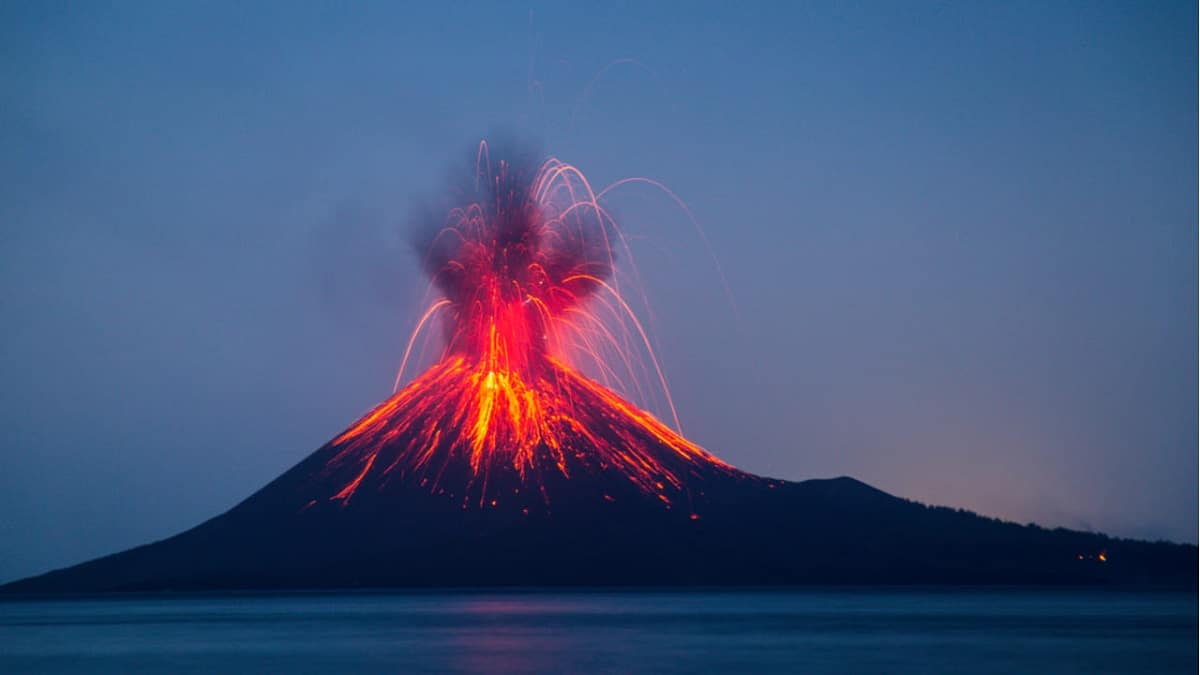
In the world there are different types of volcanoes according to their characteristics and origin. One of them is the stratovolcano. Stratovolcano is known as a variety of high-altitude conical volcanoes, formed by varying amounts of solidified lava formations, alternating pyroclastics generated during alternating periods of volcanic activity, and rivers of liquid lava and volcanic ash.
In this article we are going to focus on telling you what are the characteristics, origin and options of stratovolcano.
Key features

Stratovolcanoes are characterized by their steep profiles and by producing periodic eruptions. The lava spewed from these volcanoes is viscous and hardens as it cools before traveling great distances. Its magmatic source is rich in silica or acid and contains dacite, rhyolite and andesite. Many of these volcanoes exceed 2.500 meters in height.
Volcanologists have chosen to use the term "stratovolcano" instead of the often-used "composite volcano" to indicate the difference between the two, since volcanoes are generally characterized by having layers of various materials that have erupted differently. structure.
stratovolcanoes they are typical of subduction zone geology and occur in arcs or longitudinal chains at the edges of tectonic plates. These edges are where oceanic crust is lower than continental crust (as in the Andes) or mid-ocean ridges (as seen near Iceland). The magma that formed them emerged when water trapped in basalts and minerals spilled into the asthenosphere (the upper plate of the Earth's mantle), causing it to collapse.
Eruption of a stratovolcano

Desiccation (that is, the complete removal of water by minerals) occurs when the right conditions of temperature and pressure exist for certain minerals due to plate subduction. The water in the lower layer lowers the melting point of the rock moving over it as it is released, so partial melting occurs, making it appear less dense than the surrounding rock. It then expels magma through the crust, releasing mineral compounds rich in silica.
Magma has formed near the surface, as lagoons in magma chambers, below volcanoes. The low relative pressure of the magma helps gases (sulfur, carbon dioxide, and chlorine) and water react, much like opening a soda bottle, to form volcanic fissures and pyroclastic debris. When a certain amount of magma and gas accumulates, the roof of the volcanic cone ruptures, producing an explosive eruption.
Subduction zone

Plate tectonics theory describes plate subduction as a sequence caused by the sinking of one plate beneath another converging lithospheric plate. This process takes place in subduction zones that are currently within the Pacific Ring of Fire along the Pacific coast, in parts of the Mediterranean Sea, and off the coast of India and the South Antilles in Indonesia.
Examples of stratovolcano
- Chilean Andes. Nevado Ojos del Salado is the highest volcano in the world. This Chilean volcano is located 6.887 meters above sea level. The nearby Llullaillaco volcano, also in the Chilean Andes, is the highest volcano in the world at 6.739 meters. Nevado Ojos del Salado has a crater lake at about 6.390 meters above sea level, one of the highest lakes, if not the highest in the world. Scientists believe the most recent eruption occurred about 1300 years ago, but they aren't sure because the volcano may have spewed a small amount of ash in 1993.
- The Llullaillaco it is right on the border of Chile and Argentina. The volcano was formed by a young volcano on top of an old volcano whose top collapsed about 150.000 years ago. The youngest volcanoes began to develop about 10.000 years ago.
- Mount St. Helens. Despite its title as one of the youngest stratovolcanoes in the Cascades, Mount St. Helens is the most active. Its eruptions have created at least 35 layers of ash in the last 3500 years alone. The volcano is best known for its 1980 eruption that killed 57 people, as well as destroying 185 miles of roads, 15 kilometers of railway, 47 bridges and 250 homes. The eruption was triggered by a magnitude 5,1 earthquake and caused the collapse of debris with a volume of about 0,7 cubic kilometers.
- Mount Rainier. Mount Rainier is the highest peak in the Cascade Range at 4.392 meters. Although Mount Rainier itself developed in the last half million years, a similar cone was in place between 1 and 2 million years ago. An eruption 5.600 years ago created a large caldera on the summit, which later filled in as the summit was rebuilt by subsequent eruptions. While the volcano's last magma eruption occurred about 1.000 years ago, it has had dozens of highly explosive eruptions that scattered ash throughout Washington state.
- Krakatoa It is a volcanic island that is part of the Sunda Strait. In 1883, the volcano experienced a series of violent eruptions that sent ash more than 50 kilometers into the atmosphere and could be heard at least 2200 miles away from its location. The enormous energy released by the eruption triggered a tsunami that claimed the lives of 36.400 people on the islands of Sumatra and Java.
- Mount Tambora It is a volcano in Indonesia that erupted in 1815. In fact, these eruptions were so violent that they were recorded as some of the largest in history. Global temperatures dropped by around 3 degrees Celsius when the volcano erupted, which is not surprising since the ash was ejected 50 kilometers into the atmosphere. Because the volcano ejected so much material, it collapsed after the eruption, creating a crater large enough to be seen from space in the process.
I hope that with this information you can learn more about the stratovolcano and its characteristics.